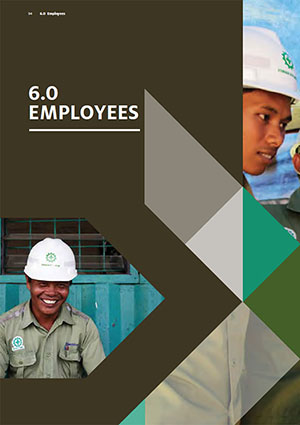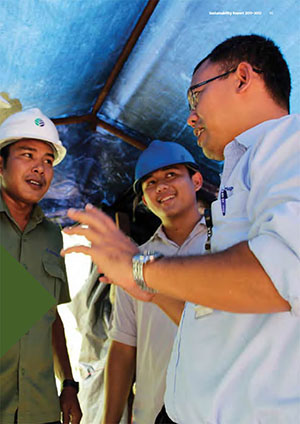As an operator of both forestry plantations and a large industrial facility, safety is of critical importance to APRIL.
Our Occupational Health and Safety (OHS) policy promotes the maintenance of a safe, healthy and secure work environment for all employees, temporary staff, contractors, customers and visitors. “Safety First” must become the dominant mindset for any person connected to our operations.
A most concerning aspect of our operating activities over 2011 and 2012 was the occurrence of injuries and fatalities.
We must be able to assure our employees and their families that APRIL’s businesses will become safer places to work.
Whilst forestry is inherently a hazardous industry and in our case this situation is exacerbated by the remoteness of our plantations, this can in no way excuse loss of life.
Accordingly, APRIL has engaged in a new set of safety programmes and initiatives with contractor safety management becoming a major area of emphasis. We have undertaken a major overhaul of our company’s approach to the management of its occupational health and safety.
Safety statistics reported and other observations during the first half of 2013 suggest these programs are having a positive effect.
We have set ourselves a goal of Zero Accidents. This requires a company-wide commitment. The alternative, to allow the situation of recent years to persist, is not an option.
Definitions
Under the “OSHA” Standard used for reporting here, Lost Time Injury Frequency Rate (LTIFR) is calculated as the number of Lost Time Injuries plus fatalities, divided by the number of hours worked, multiplied by a factor of 200,000. Total Recordable Incident Rate (TRIR) means the number of injuries and illnesses, or lost workdays, per 100 full-time workers.
Improvements
A major focus during 2011 and 2012 was improving the consistency and comprehensiveness of our systems for capturing statistical safety performance data. This reflects our belief that proper measurement is a key step in implementing improvement. Statistical outcomes from 2011 onwards reflect this commitment to diligent recording of data.
While our overall safety performance over 2011-2012 was unacceptable, some statistical improvements have become evident in measures such as reduction in LTIFR and TRIR for both fibre and mill operations.
Figure 57: LTIFR AND TRIR PERFORMANCE
The above table suggests that the comprehensive range of safety measures we introduced in 2012 (including the 12 new programmes referenced below under the heading “Implementing behavioural safety”) are beginning to have an impact, with downward trends being established (as at the date of reporting) in LTIFR and TRIR for both our forestry and mill operations. The effectiveness of these programmes is being closely monitored and will be reported in future years.
Significant progress was also made in building organisation-wide commitment to our goal of Zero Accidents. We will continue this process, while working to translate commitment into better day-to-day safety practices.
One initiative that we expect to have a major impact on safety performance is the shift toward full mechanical tree harvesting. Manual felling activity is hazardous and difficult to manage safely for reasons detailed in this section of the report. The transition to mechanical harvesting will lessen risk among contractors.
Challenges
While APRIL Indonesia has always placed workplace safety as a top priority, safety improvements are needed if we are to discharge our responsibilities as a leading employer in Indonesia. In order to establish Zero Accident workplaces, we must first commit to building a Total Safety Culture.
We have revised our statement of commitment to achieving this goal. APRIL’s “HSE Management System Paradigm” now states: “We, APRIL Riau Complex and our Business Partners are committed to working towards a Total Safety Culture by January 2014”.
We acknowledge that the challenge we have undertaken in this area is effectively, a safety revolution. To achieve this, we are addressing a number of specific challenges.
- Time. We cannot implement the necessary cultural and behavioural changes overnight. The process of change is time-consuming and requires great commitment right across the organisation. This commitment must be reflected in comprehensive systems and processes.
- Priorities. A key insight into managing occupational risk has been the recognition that our organisation’s traditional paradigm of “Priority = Production” must change to “Safe Operations First”. Recognising that improvement in safety performance is a journey, we have adopted “Behaviour Based Safety”(BBS) as our target. To emphasise this priority shift, our OHS management unit has conducted monthly meetings on safety issues with top management and department heads.
- Leadership. Change is required in leadership at every level. We have now modified our human resources and management systems to embed ten key safety behaviours as key performance criteria/indicators. Leaders will be individually assessed for their performance in demonstrating these behaviours and outcomes will be linked to remuneration and bonuses.
- Training. Low education levels and inadequacy of on-the-job training (especially in the case of contractors) have been identified as key contributing factors in a number of fatalities. APRIL has embarked on a programme of extensive coaching and training to begin improving this situation.
- Changes in work practices. Where our analysis of operating procedures identifies significant risks, we will consider changing practices. For example, in harvesting activities, we are working toward the objective of full mechanical felling, where terrain and soil conditions permit, in order to minimise the felling activity that has caused a number of fatalities in the past.
Safety Performance
The following graphs summarise the five year safety performance of the Kerinci Mill complex and our Fibre operations, (connected to forestry).
Figure 58: NUMBER OF LOST TIME INJURIES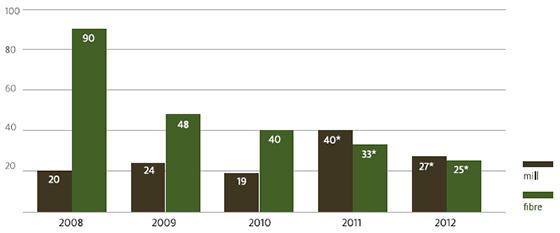
Figure 59: LOST TIME INJURY FREQUENCY RATE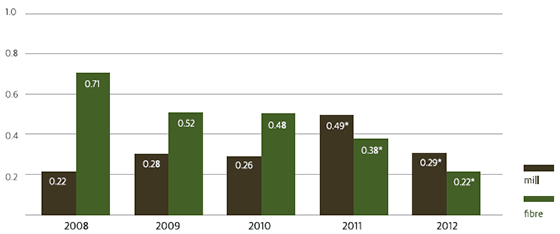
Figure 60: TOTAL RECORDABLE INCIDENT RATE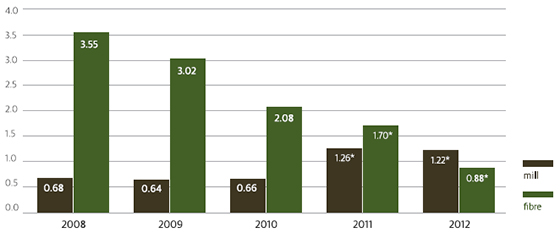
Figure 61: NUMBER OF MEDICAL INJURIES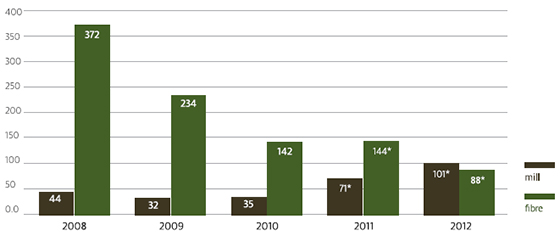
Figure 62: MAJOR ILLNESSES 2008-2012 RIAU FIBRE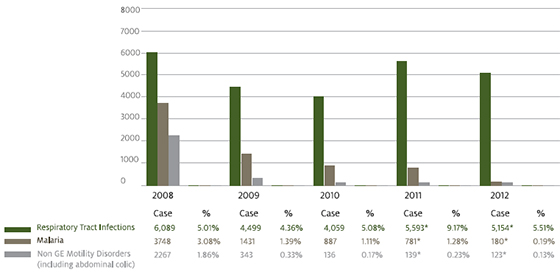
Note: Detailed continuous records have been kept for the above three illness categories, identified as the most prevalent major illnesses in the APRIL workforce in 2008. Records of other significant illnesses are also maintained.
Safety Systems
APRIL’s Occupational Safety and Health Management System (OHSMS) is based around a series of well-recognised Standards:
The company adheres to the Occupational Health and Safety Assessment Series (OHSAS) 18001 Standards (for both plantation forestry and mill operations).
To systematically implement business improvement in our operations we follow the 5 ‘S’ Workplace Organisation Process - the Kaizen-based system. We are in the process of moving to a 6 ‘S’ system, which adds the element of Safety.
A further key process is the principal Indonesian Occupational Health and Safety system, SMK3 (“Sistem Management Keselamantan Kesehatan Kerja”).
While APRIL Indonesia has always placed workplace safety as a top priority, safety improvements are needed if we are to discharge our responsibilities as a leading employer in Indonesia. In order to establish Zero Accident workplaces, we must first commit to building a Total Safety Culture.
Reviews
APRIL is audited every three years under OHSAS as well as under SMK3. In November 2011, we successfully passed a 3-yearly OHSAS audit.
In April 2013, we were awarded a “Golden” flag and certificate under SMK3, signifying we are implementing the 166 criteria within the 12 elements of the SMK3 system (representing 90% plus implementation).
Fatalities
As mentioned above, despite our statistical improvement, fatalities occurred in our businesses during 2011 and 2012.
Mill operations: four fatalities occurred in 2011 and five in 2012*.
Fibre operations: nine fatalities occurred in 2011 and four in 2012*.
The incidents which led to fatalities in Mill operations were diverse and included:
a contractor falling from height while replacing materials on a roof; a contractor suffering an electric shock while chipping off Boiler Wall Tube Refractory in the furnace of the power boiler; a contractor electrocuted while drilling a retaining wall of a calcium hydroxide sludge bunker and a contractor coming into contact with moving parts on a conveyor while performing on-the-run repairs*.
A mill employee died after inhaling noxious gases at a recovery plant, the result of nonuse of protective equipment, required by Standard Operating Procedures*.
In a catastrophic incident on a fibre line on February 7, 2011, three contractors and one employee lost their lives when they came into contact with high temperature pulp while performing on-the-run repairs*.
Of the total of 13 fatalities in Fibre operations across the reporting period, eight involved deaths of chainsaw operators struck by trees during felling*.
The remaining five fatalities in Fibre operations involved a drowning in a canal, a worker trapped in a pontoon ramp, two road traffic accidents and a boat accident*.
Procedure for Analysing Fatalities
We thoroughly review and analyse all serious incidents, including fatalities, and take corrective actions. In the event of a fatality, we commission a full investigation as required by Indonesian law, OHSAS 18001 and our own systems.
A fatality report is produced and reviewed in detail by senior management. Process improvements are then implemented. Every fatality that has occurred has been exhaustively analysed and investigated, resulting in system improvements. All fatalities are reported to the Indonesian government. Senior staff are assigned to work with and assist the families of the victims.
Each of the incidents leading to these deaths, and the circumstances behind each fatality are extensively investigated and the results presented to, and reviewed by, senior management. As a result, insights have been reached about the nature of the risks in our business and the steps needing to be taken to move our safety performance to new, more acceptable levels.
Key insights obtained from this process of review and analysis include:
- The high rate of fatalities among contractors has shown inadequacies in safe work training procedures used by many contractors.
- The fatality rate also demonstrated deficits in our previous procedures for on-boarding contractors. We have upgraded our training programme to ensure contractors are fully apprised of the workplace risks in heavy industrial mill and forestry environments.
- A high number of fatalities have been due to workers not following standard operating procedures, and this particularly relates to the large number of fatalities in tree felling operations.
- A contributing factor is generally low education levels among the population from which many contract workers are engaged.
- An identified need to place stringent limitations on who is permitted to work on our sites.
Implementing Behavioural Safety
APRIL has planned a staged methodology and approach to achieving a Total Safety Culture by 2014. Our challenge is to accelerate through this process to the point of Zero Accidents. Behavioural Safety cannot be achieved overnight. It is not easy to fundamentally change safety behaviour. A relentless focus is required from supervisors, managers and front line employees.
Our success is directly related to the wellbeing of our employees. Their most basic requirement is a safe work environment. Therefore, our top priority must be ensuring that everyone is safe on the job.
Figure 63: ORGANISATIONAL SAFETY MODELS AND ASSOCIATED INJURY RATES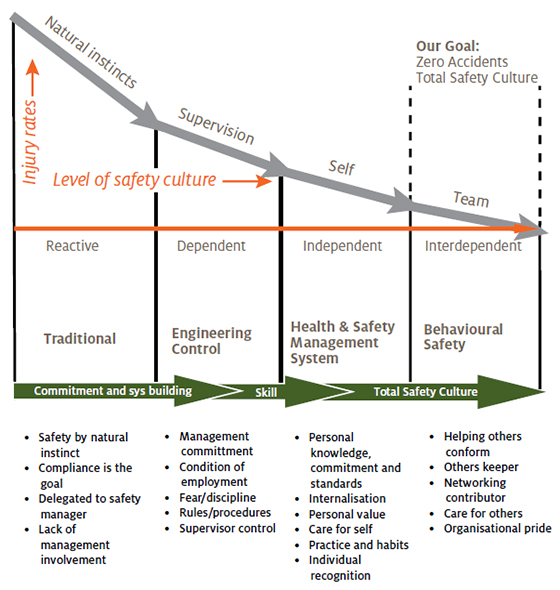
The schematic above shows the process of evolution from Traditional to Behavioural safety, with the associated reduction in injury rates. It can be seen that the Traditional approach to organisational safety is characterised by reactivity and natural instinct and tends to be associated with high rates of injury. In this approach, compliance, rather than self care is the goal. The next phase, Engineering Control has a higher level of management involvement but is driven by external pressure to conform to regulations.
The Health and Safety Management phase involves employees internalising or “owning” the responsibility for safety. The final and desired position, Behavioural Safety involves employees extending this approach to caring for each other. It is when safety becomes embedded in employee behaviour that a Zero Accident level can be maintained.
As part of our focused drive toward Zero Accident workplaces, we have introduced the following new programmes and enhanced a range of existing safety initiatives.
 Figure 64: NEW SAFETY PROGRAMMES 2011-2012
Figure 64: NEW SAFETY PROGRAMMES 2011-2012
| 1. | Contractor Safety Management System (CSMS) |
In November 2011, a pilot Contractor Safety Management System project commenced in the Mill. This project involved the appointment of 350 positions designated as Process Safety Engineers (PSEs). This group consisted of both existing and new employees. All PSE’s underwent retraining and modification of job responsibilities. Extensive systematic education and the attainment of certification from the Ministry of Manpower of Indonesia (a two-week programme) have given these individuals a reasonable level of expertise in safe business processes. |
| 2 | Contractor Safety Management (CSM) |
A new stipulation is that only contractors who pass CSM accreditation can be involved in bidding for work. Following a process of review, we have reduced the overall number of contractors working within our Contractor Safety Management System, resulting in a smaller number of contractors with the desired focus on safety. Work permits are only issued to contractors who have completed the required safety training. |
| 3 | Fibre operations initiatives |
In response to the high fatality rates among contractors working in Fibre operations, we have implemented an improved OHS Management system specifically for these businesses. These cover HIRADC, SOP and a Plantation Quality Checklist. Improvements include an OHS management system designed for chainsaw operators. Training for these operators has been upgraded with tools such as audio-visual support material. We have also introduced new First Aid protocols such as the provision of first aid kits to all chainsaw operators and the training of assigned staff First Aiders. We have also introduced a system of rewards and incentives to encourage better safety behaviour among employees and improved health and safety related facilities in housing and workers’ camps. |
| 4 | Safety Inductions |
A full-day safety induction is held for each new employee in technical and operational areas in our Mill and Fibre operations. |
| 5 | Training |
As mentioned, low education levels and inadequacy of on-the-job training (especially in the case of contractors) have been identified as key contributing factors in a number of fatalities. Consequently, in 2011 and 2012, more than 3,200 people were safety-trained in the Mill operation alone. We have also undertaken extensive coaching and training of employees and contractors. Safety refresher training is continuously provided for all workers. In keeping with the foundations of Total Safety Culture, training has emphasised the need for workers to look out for the welfare of one another, as consistent with the “others’ keeper” notion. They are trained to intervene whenever unsafe behaviours are observed and to help educate one another about potential hazards and the consequences of unsafe behaviour. |
| 6 | Better Engagement with Union and other Workforce Leaders |
To ensure further understanding and acceptance of the need to improve safety, we have commenced a programme of regular monthly meetings with trade union leaders and members as well as contractor leaders. |
| 7 | Supply of Personal Protective Equipment |
APRIL has conducted a thorough review of the availability and types of PPE for all operations. There has been significant capital investment in new safety equipment, while staff received comprehensive training in when and how to use PPE. |
| 8 | Zero Tolerance of Disregard for Safety |
Unsafe behaviour cannot be tolerated and it is company policy that employees may be dismissed for contravening safety protocols. The same stringent approach is being applied to contractors, with termination of engagements for particular individuals identified as not following safe work practices |
| 9 | Standard Operating Procedures and Work Directions |
There has been an enhanced focus on training and educating all front-line workers and contractors about the specific procedures and tasks involved in their jobs. Clear expectations were given regarding how those roles should be carried out safely. This was reinforced through an emphasis on effective supervision and monitoring, to enforce adherence to procedures. Standards, Policies and Administrative Controls (SPAC) are regularly reviewed and updated, based on critical evaluation. |
| 10 | Worksite inspections |
In our efforts to reduce incidents of unsafe behaviour, we have expanded measures such as routine safety observations and the issue of non-conformance reports and violation tickets. We have also increased safety spot-checks and improved our safety inspection methods and procedures. Penalties and fines were included for infractions. In the case of serious non-compliance with safety procedures, worker and contractor suspensions have been imposed. |
| 11 | Employee Health and Wellbeing |
APRIL has implemented an ongoing programme of medical check-ups and evaluations for employees*. A main objective of this programme is to ensure that all employees in operational roles are in good physical condition. On site emergency ambulances have been introduced within the mill area, while a new campaign was launched to promote and encourage better hygiene practices among employees, contractors and their families. This has included doctor visits to camps, canteen inspections, period medical check-ups, routine safety talks and inspections*. We have also improved the systems used to pinpoint the principal causes of work-related illness as well as our emergency medical treatment services and first aid resources, which has included enhanced records of work-place hazards and employee illness histories*. Malaria and upper respiratory tract infections remain common occupational diseases affecting our Fibre workforce and measures are being taken to reduce the incidence of both these diseases among our employees and contractors, including provision of clean water, improvements to housing facilities at base and field camps, medical talks, distribution of medicines and better road watering practices*. |
| 12 | Communications |
A major safety information campaign was launched in 2012. This programme focused on supervisors, who are expected to convey specific safe work instructions to each worker in their area of responsibility. |
